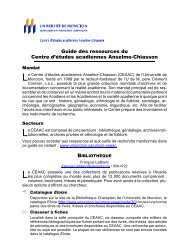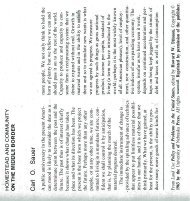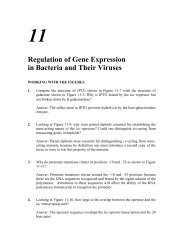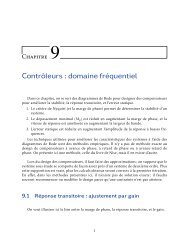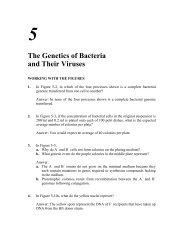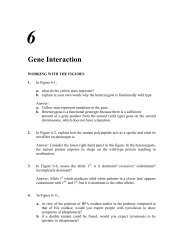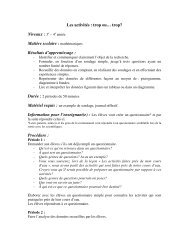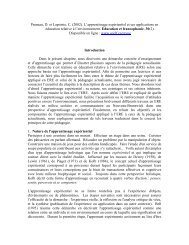IGA 8/e Chapter 2
IGA 8/e Chapter 2
IGA 8/e Chapter 2
Create successful ePaper yourself
Turn your PDF publications into a flip-book with our unique Google optimized e-Paper software.
10 <strong>Chapter</strong> TwoAnswer: Because the DNA levels vary four-fold, the range covers cells that arehaploid (gametes) to cells that are dividing (after DNA has replicated but priorto cell division). The following cells would fit the DNA measurements:haploid cells2x diploid cells in G 1 or cells after meiosis I but prior to meiosis II4x diploid cells after S but prior to cell divisionx +19. Name the key function of mitosis.Answer: The key function of mitosis is to generate two daughter cellsgenetically identical to the original parent cell.20. Name two key functions of meiosis.Answer: Two key functions of meiosis are to halve the DNA content and toreshuffle the genetic content of the organism to generate genetic diversityamong the progeny.21. Can you design a different nuclear-division system that would achieve the sameoutcome as that of meiosis?Answer: It’s pretty hard to beat several billions of years of evolution, but itmight be simpler if DNA did not replicate prior to meiosis. The same eventsresponsible for halving the DNA and producing genetic diversity could beachieved in a single cell division if homologous chromosomes paired,recombined, randomly aligned during metaphase, and separated duringanaphase, etc. However, you would lose the chance to check and repair DNAthat replication allows.22. In a possible future scenario, male fertility drops to zero, but, luckily, scientistsdevelop a way for women to produce babies by virgin birth. Meiocytes areconverted directly (without undergoing meiosis) into zygotes, which implant inthe usual way. What would be the short- and long-term effects in such asociety?Answer: In large part, this question is asking, why sex? Parthenogenesis (theability to reproduce without fertilization—in essence, cloning) is not commonamong multicellular organisms. Parthenogenesis occurs in some species oflizards and fishes, and several kinds of insects, but it is the only means ofreproduction in only a few of these species. In plants, about 400 species canreproduce asexually by a process called apomixis. These plants produce seedswithout fertilization. However, the majority of plants and animals reproduce




